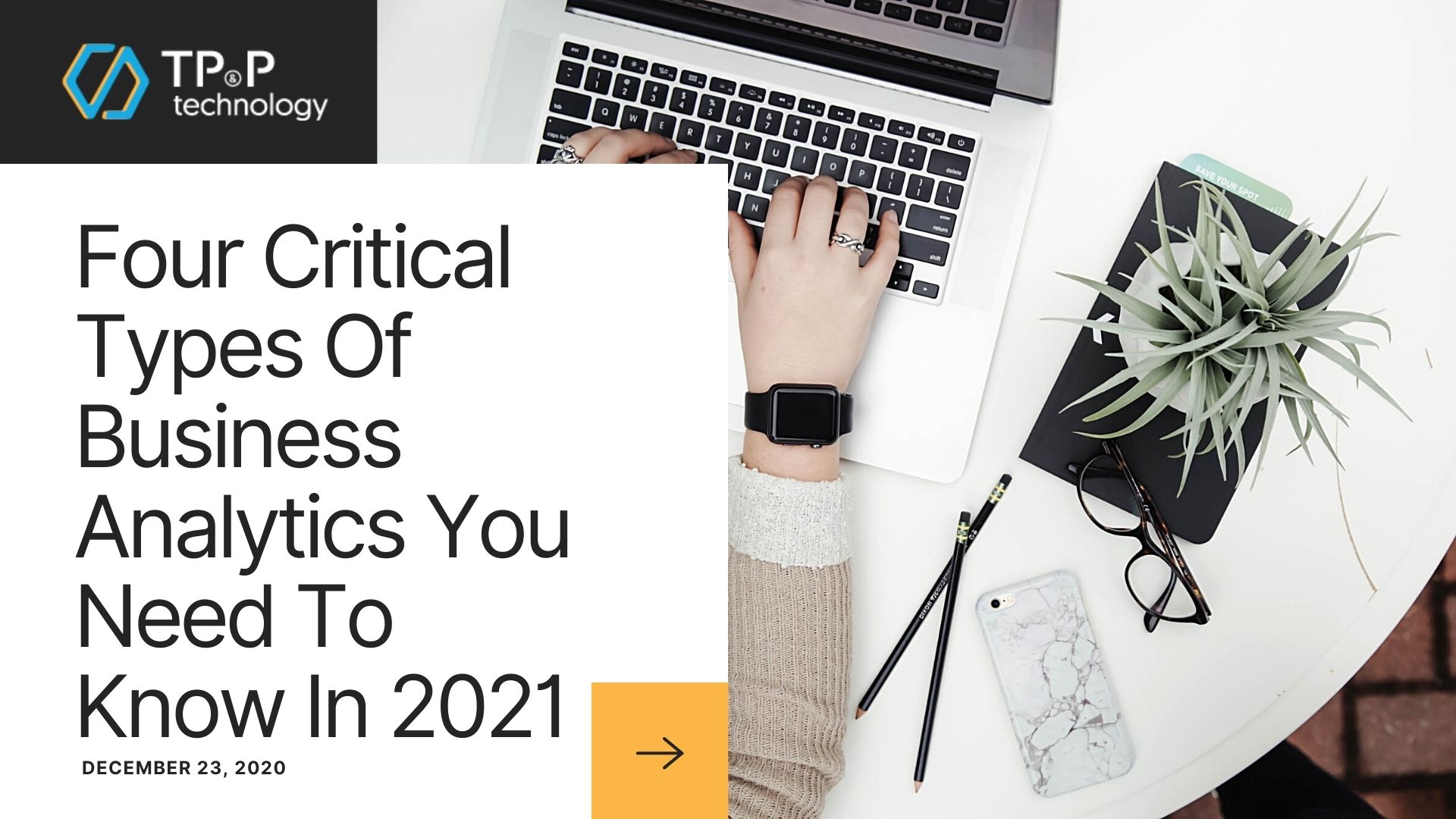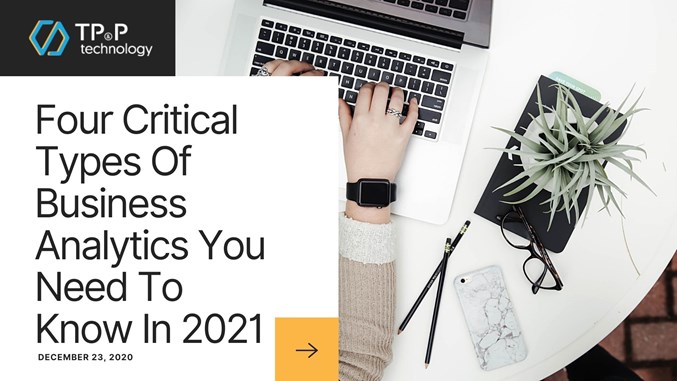
Four Critical Types Of Business Analytics You Need To Know In 2021
What is Business Analytics?
Business analytics (BA) is the term that refers to the use of data management to iteratively explore and investigate past business performance to gain essential insights and drive business planning. BA focuses on generating new insights and a better understanding of business performance based on data and statistics.
Although BA has been used widely in business since the late 19th century, it has exploded with the introduction of computers. This change leads analytics to a whole new level and brought endless opportunities to the table.

Some of the main components of a typical BA dashboard are:
- Data Aggregation
- Data Mining
- Association and Sequence Identification
- Text Mining
- Forecasting
- Predictive Analytics
- Optimization
- Data Visualization
Business analytics depends intensely on sufficient volumes of high-quality data, which is integrated and reconciled across different systems, and then decided what subsets of data to make available. Before, analytics was deemed as a type of forecasting consumer behavior by scrutinizing the number of units sold in the last quarter and last year if necessary.
Four main types of Business Analytics
For different stages of BA, a large amount of data needs to be processed in separate steps. Depending on where you're in workflow and the requirement of big data analysis, you will need to use different BA types, four of which are descriptive, diagnostic, predictive, and prescriptive. When these four types combine, they can answer everything a business needs to know - from how the company is doing to what solutions they should adopt for optimizing the functions.
The four types of analytics are usually done in stages, and none is considered to be better than the other. They are related, and each type provides different insights. Because big data is essential to many business sectors, many companies rely on one or all of these types of analysis, from manufacturing to the energy grid. By choosing the right analytics methodologies, big data can provide companies with deeper insights.
Before delving deeper into each of these types, let’s explore the notion of the four analytics types:
- Descriptive analytics refers to the existing data using the current business intelligence tools to understand better what is going under the surface.
- Diagnostic analytics pays attention to past performance to discover what happened and why it happened. The result is often an analytic dashboard.
- Predictive analytics highlights the possible outcome prediction using statistical models and machine learning techniques.
- Prescriptive analytics is the predictive analysis used to suggest one or more business processes for data analysis.
For beginners, descriptive explains what happened; diagnostic explains why it happened, predictive forecasts what might happen, prescriptive recommends a suitable solution based on the estimates.
Descriptive analytics
This can be called the simplest form of analytics. The size of big data is beyond human understanding, so the first step involves compressing the data into understandable parts. The purpose of this analysis is to summarize the findings and understand what’s going on.
In some commonly known terms, what people call advanced analytics or business intelligence is the use of descriptive statistics on existing data like mean median, percentage, arithmetic operations, etc., 80 percent of BA activities involve summarizing past performance-based descriptions. This is considered a critical step to take in making raw data comprehensible to all stakeholders. This way, businesses can identify and address strengths and weaknesses, which directly impacts developing strategy.
The two main techniques are data aggregation and data mining. It is believed that descriptive analytics is solely used to understand the underlying behavior and not estimate. By mining historical data, companies can analyze consumer behavior, and their business promises will contribute to targeted marketing, service improvements, and so on. The tools used during this period are MS Excel, MATLAB, SPSS, STATA, etc.
Diagnostic analytics
Like mentioned, diagnostic analytics is used to tell why something happened in the past. Techniques like drill-down, data discovery, data mining, and correlations are its characters.
The main purpose of diagnostic analytics is to provide information about the root cause of the problem.
For instance, when it comes to marketing, diagnostic analytics helps refine the marketing message and sales offers. It can also tell you why there is a sudden drop in website search traffic when you can’t see any obvious reasons. The tool can reveal the reason and then assist you in taking corrective actions.
Predictive Analytics
After understanding what is happening and why it is happening that way, the ultimate goal is to know the possible risk and opportunity. Predictive analytics is used to predict the possible outcomes. This analytics model is built on the preliminary descriptive stage to obtain the possible results.
The model contains machine learning algorithms like SVM and statistics for learning and testing the data. Some of the standard predictive analytics tools include Python or RapidMiner, etc.
Prescriptive Analytics
The last stage will suggest all possible outcomes based on one specific course of action and suggest other activities to get a particular result. The model uses a strong feedback system that learns the relationship between action and outcomes.
One of the obvious uses of prescriptive analytics is Uber or a similar vehicle for hiring services. When calling a cab online, the application optimizes the distance between you and the driver and suggests the route. The recommendation function uses prescriptive analytics.
Another approach involves simulation, where all key performance areas are grouped to design an accurate solution. It ensures that all key performance indicators are included in the solution. The optimized model will further influence the previously given forecast. Due to its ability to develop beneficial solutions, descriptive analysis is the ultimate frontier of today’s term advanced analysis or data science.
Conclusion
The four analytics techniques may seem to appear like they need to be performed in order; however, in most cases, companies can directly conduct prescriptive analytics. Most companies already know of and are implementing descriptive analytics, but if the company has identified the key areas that need to be optimized and implemented, it must employ the prescriptive one to achieve the desired outcome.
Business analytics plays an important role in organizations, providing a competitive advantage to companies in this digital age flow of information. TP&P Technology is your companion as we are one of the top big data consulting services.
Talk to our consultant team now to know how our BA team can help you in your next digital transformation journey


